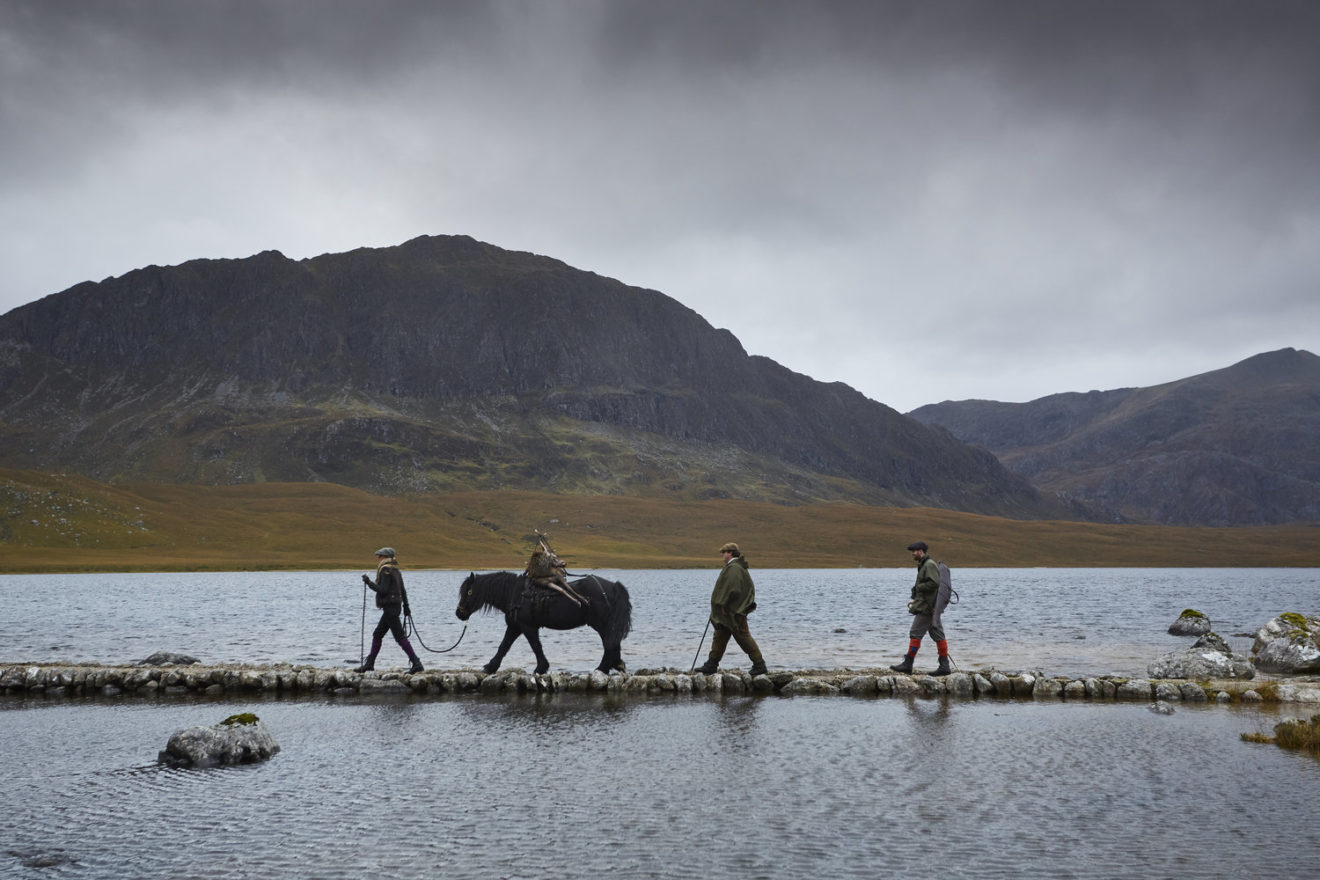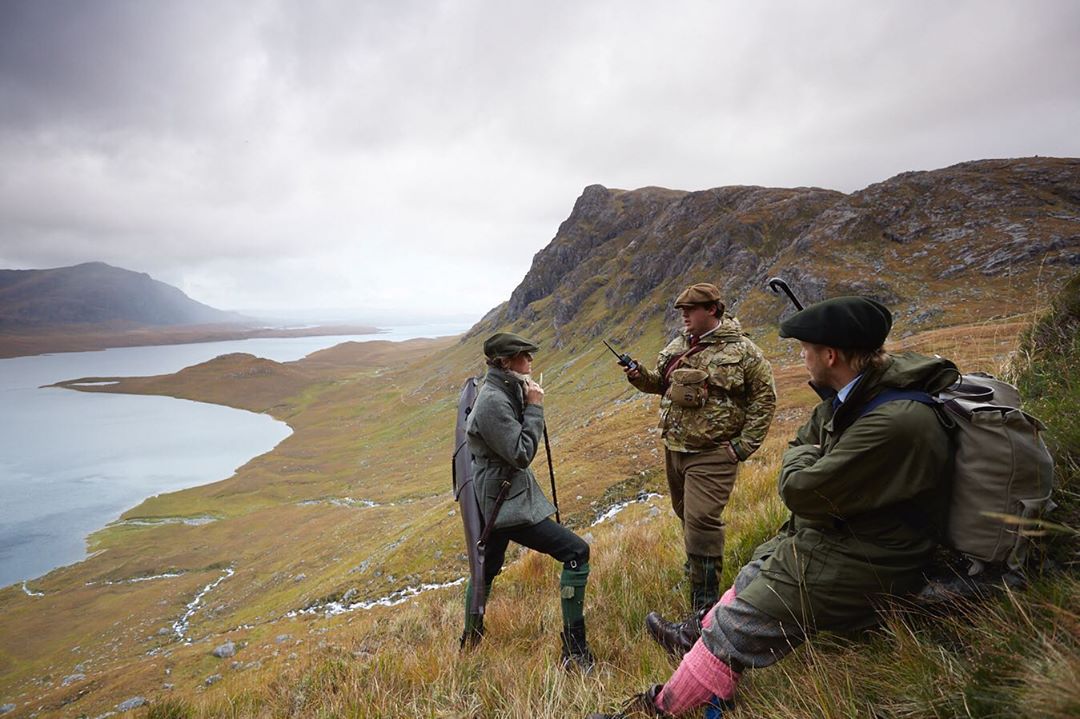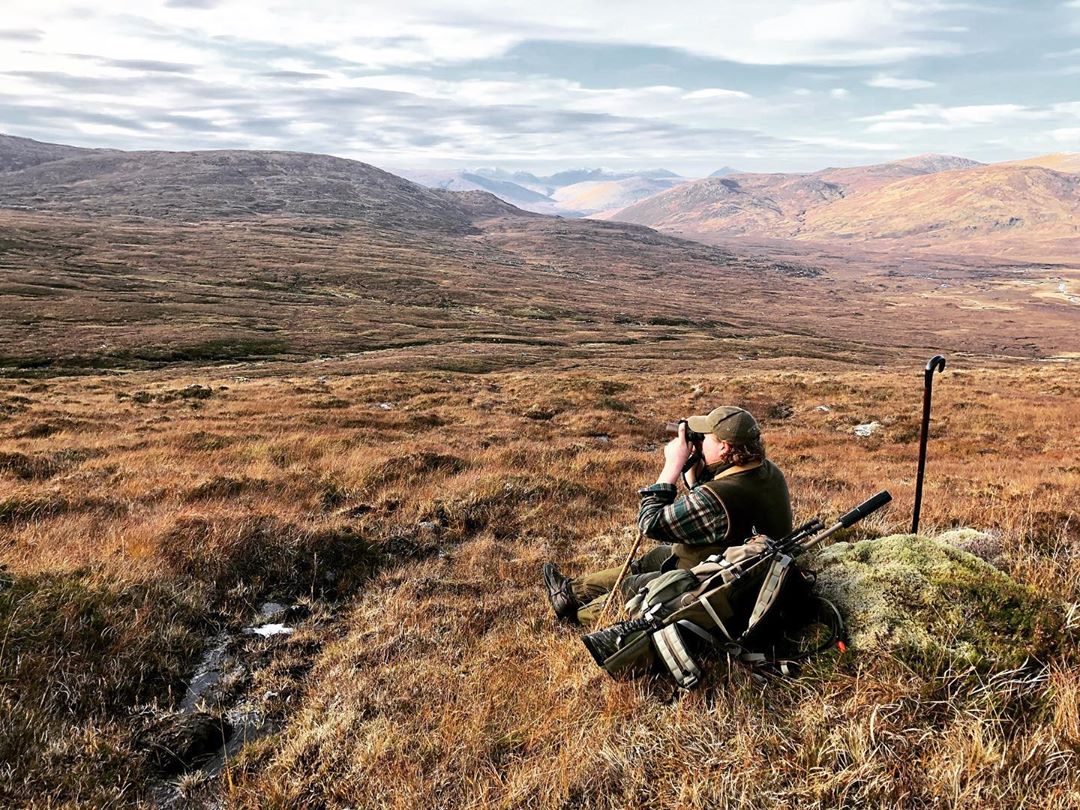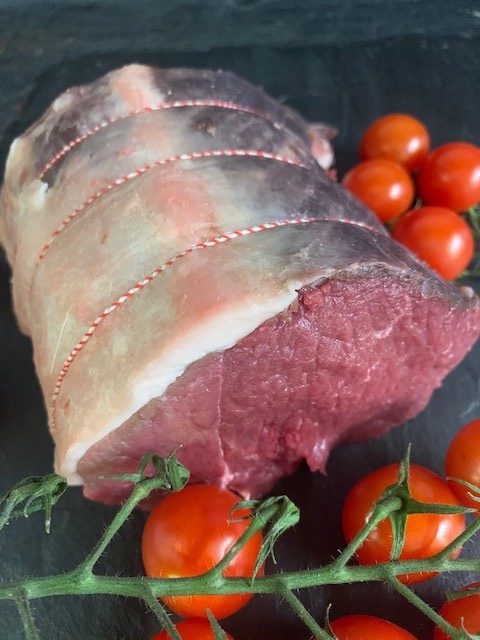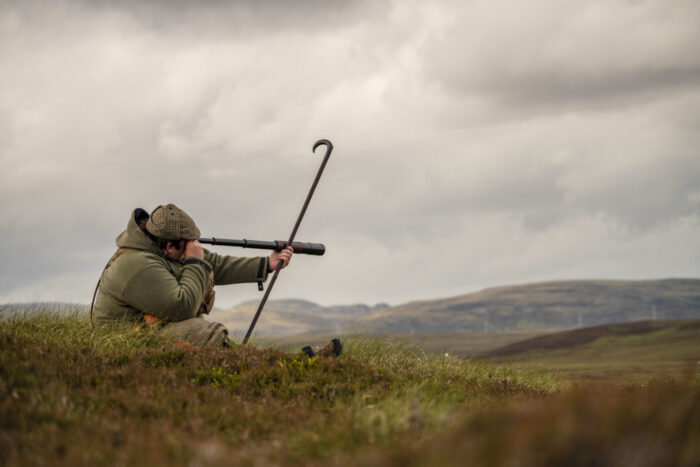Impact of Covid-19 on Scottish Hunting Estates
As Scotland reaches a landmark ten days with zero recorded Coronavirus deaths, small businesses around the country who rely on hunting tourism to pay the bills are preparing for easing restrictions. We spoke with Sam Thompson of Govha, an elite guided hunting and outdoor adventure outfitter based on Scotland’s northwestern coast, about how COVID-19 has impacted the hunting and fieldsports industry, and how the trickle-down effect of restrictions have made lasting changes on the economy and way of life in Scotland.
Thompson is a trained forester and deer manager in England and Scotland, and he is the founder and head guide for Govha, which takes its name from the Scots Gaelic word for “goat.”
“The wild goat was the inspiration for my company name because they are found in the wildest and hardest-to-reach places of Scotland,” Thompson said.
Govha offers year-round adventure and one-of-a-kind stalking experiences with luxury accommodations. Their primary clients are international hunters and adventure-seekers, which makes the impact of COVID-19 acutely felt.
“It’s really hard, but it’s hard for everybody. We’re not alone in it,” Thompson said. “The hospitality industry is in really bad shape. Britain’s been quite a lot slower to open up compared to a lot of Europe. We had a long period where you couldn’t travel further than five miles, but we’re now back to normal thankfully. Ninety-nine percent of our hunting clients travel at least four hours to get to us. It’s bad, but I don’t think it will be devastating, whereas I worry a lot about the accommodation providers – this will be absolutely devastating.”
Thompson said the estates that Govha partners with are not in danger of closing down – many large estates are owned by wealthy philanthropists who do not rely on the income generated from hunting to stay in business. But others are facing an uphill battle to stay open. According to a report by the BBC, more than 15,000 tourist businesses and 218,000 workers (8.3 percent of Scotland’s total workforce) confronted a dire financial situation with the onset of Coronavirus, which shut down much of the nation’s hospitality industry just as Scotland’s tourism season typically gets into full swing.
“Thankfully, the rules have changed, so other people from parts of Scotland and England can start coming up on holiday. But the international thing, that is going to be the real kick for us,” Thompson said. “Hopefully, it means more hunting opening up for local people. The economic cost just to the Highlands is estimated to be £9 million [$11.5 million US]. That’s huge, and if you combine the loss of clients with the drop in meat value, I think it’s going to be real touch-and-go for the smaller estates and smaller operations.”
Thompson said one way his outfit is looking to make up for the dearth of international stalkers is by shuffling his 2020 schedule to fill stalks with UK-based hunters and move any international bookings to 2021 – provided the Scottish borders open to international travelers by then.
“We’re in this weird waiting stage. I’m having a lot of phone calls with people about where we’re going to go next and what we’re going to do next, how it will work. Nobody’s sure,” he said. “Some estates have canceled all hunting this year – just said, ‘Right, your bookings are all rolled over into next season’ just to be sort-of uber-safe.”
In Scotland, 99 percent or more of the hunting is guided hunting, Thompson said, with the majority of professional stalkers still working. But the cash-strapped estates may move their guides onto furlough (currently, British government is paying 80 percent of wages through a Furlough Scheme) and lease the land out to keen amateur hunters
“I would say the busy time for clients is from mid-August through late November,” he said. “That’s our peak time and that’s where we’d be making most of our money, normally. Hopefully, we’ll be able to have accommodation and lodging available, so that in theory by August we can have some guys on the hills hunting and having fun.”
Local Hunting
A renewed focus on local hunting is a passion project for Thompson. He said locals rarely make use of the abundance of public lands to fill their freezers with fresh game meat. It’s something he hopes to change, and the unfortunate circumstances surrounding the Coronavirus pandemic may provide a silver lining to getting locals on board with deer stalking and processing in their own back yards.
“Certainly, for our domestic clients, that’s something I think is really important,” he said. “Most people are driving up here and it’s easy for them to throw a cooler in the back and take some meat home with them. It’s not the norm in Scotland, and a few of us are trying to change that.”
By some people in Scotland, deer are seen not as the majestic figureheads of a wild kingdom of highlands and glens – rather, they are an object of scorn and widespread culling on the part of environmental activists and the Scottish government. In fact, estates are responsible for preventing the deer populations on their land – sometimes tens of thousands of acres – from getting too big and potentially destroying historic forests by eating small-growth trees and plants.
“The government in Scotland does not really care about deer. They really don’t. It’s amazing – for this massively iconic animal, you speak to members of the public about red deer stags, and that’s what they’ve come here to see,” Thompson said. “Yet some government officials treat them like they’re vermin that eat trees. It’s quite different from America where a lot of your environmentalism is against killing animals. A lot of environmental activism in Scotland is pro killing deer in order to grow trees.”
Controlling the Population
The cull is an annual voluntary deer management practice where estate owners and deer stalkers eliminate thousands of red deer in an effort to preserve heritage sites and increase forest density in the name of combating climate change. A report estimated the wild deer population in Scotland at 1 million, with 300,000-400,000 red deer.
“There are legal precedents that if you let your deer population build up to a level that was damaging designated sites, the government could send in contract cullers to shoot your deer for you,” Thompson said.
But this year, there’s a hitch – what to do with the thousands of deer carcasses produced by the cull. Typically, game dealers will purchase the carcasses from the estates after the cull and process them into venison, which is then purchased by local restaurants and hotels. The local population does not typically eat venison – but you’ll find it aplenty on menus in places frequented by tourists. With tourists out of the picture, and restaurants operating at a lower capacity, the market for venison just doesn’t exist.
“Because of the way meat-processing law is written, there’s no way to donate the meat. You could donate a whole animal in the skin, but who would butcher the meat? Game dealers are the qualified ones, but there is still a question of capacity because the restaurants aren’t open [to their full extent]. That’s a massive part of the venison market. It goes into commercial catering rather than domestic households,” Thompson said. “If there is not an outlet for it, we have to come up with a way of distributing the meat locally, which I would be okay with honestly. We’d lose some revenue, but I think it’s the right thing to do.”
Thompson joked about handing out venison carcasses to truck drivers as they pass through and offering free lessons on processing the carcass into delicious cuts of meat.
“I think the game dealers will be open, but if not, we’ll have to come up with clever plans to distribute the carcasses locally and maybe give free butchering lessons if you’ve been given a whole deer in the skin,” he said. “It’s not the end of the world. It’s more work and harder than what we’re used to, but anything that gets more venison being eaten locally, I’m all for it.”
Joking aside, there’s a nugget of gold in that idea. A local population that is aware of the abundant free-range meat in their own backyard would be a boon both for the environment and for local stalking companies. Thompson pointed to the success of the lobster and langoustine industries in renewing local interest in seafood from their own waters when international trade came under threat from the spread of COVID-19.
“Commercial shellfish fishing is a massive industry on the west coast,” he said. “Because of the import-export ban because of COVID, they’re selling lobsters and langoustines and prawns locally for the first time ever. They haven’t sold lobsters locally in the last 25 years, as long as I’ve been in Scotland.”
He’d like to replicate that same success when it comes to deer stalking in Scotland.
“It’s boomed into this business that nobody really thought was there, and that’s great. I’d love to see something like that with the deer. It would be so awesome if we could source out local processing and local butchering,” he said.
Conclusion
While the spread of Coronavirus has impacted Scotland in acute ways, uncertain times are forcing a new kind of flexibility on the part of outdoorsmen like Thompson, and of the industries that supplement the hunting businesses, like hotels, lodgings and restaurants. But hard times also bring about the possibilities for new things – a chance to re-introduce the people of Scotland to the rich tradition of hunting and equip them with the means to enjoy the bounty of their own backyard.
Jeremy Mallette is co-founder of International Sportsman. An avid hunter and outdoorsman, he has spent more than a decade in the outdoor industry, from hiking and camping to silencers and hunting. His father taught him to shoot at age six, and he received his first firearm at age eight — a 1942 Colt Commando .38 special revolver. He enjoys yearly trips to Kansas for pheasant hunting, spending time with his children at the deer lease, and collecting unique firearms.

